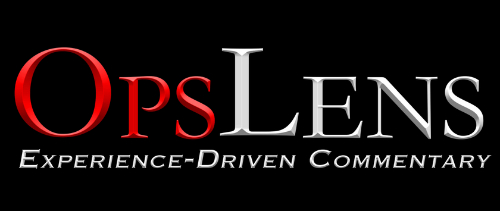“Active patrolling is how we understand, meet, and defeat the enemy in combat. We must use active patrolling across cyber platforms to protect service members as well…”
The ongoing “Marines United” scandal as well as emerging illicit photo sharing scandals in the US Army and Navy beg the question of whether social media helps or hurts the good order and discipline of the US military. In past weeks, the vast amount of mounting evidence on the “Marines United” Facebook group page supplies ample evidence that the ability to post, share, notify, and freely distribute various forms of electronic media has been exceptionally damaging to the discipline of the US Marines. In addition, written social media comments by Marines United members, visitors, and other parties against women and other service members has been damaging. In this instance, clearly, the use of Facebook and other social media platforms has damaged both the image of the US military and the reputation of serving military members, primarily women.
Social media and the US military have become inextricably linked together. Facebook founder Mark Zuckerberg’s recent visit to Fort Bragg demonstrates the clear and tight linkage between the two. Every major command in the military employs social media to communicate its mission, values, and selected activities to the public and its own members. Finally, social media is a communication lifeline between deployed service members and family members. Despite the Marines United scandal and others emerging across the services, the continued use of social media by the military is a certainty. There are several immediate and effective steps that the military can take today to ensure a better, more effective use of social media.
Set and Enforce Social Media Standards of Conduct. The US military needs to create comprehensive and uniform standards of social media use, file sharing, and content posting. The services must also determine how to enforce these social media standards of conduct through the Uniform Code of Military Justice (UCMJ) and other disciplinary measures. If I insult a fellow service member in person, there are consequences. If I insult a fellow service member on social media, there should be the same consequences. Finally, like all standards, there should be clear training on how military members are expected to behave on social media.
Become Comfortable and Use Social Media for Good. Social media is a way for the US military to demonstrate its values, communicate quickly with service members, use video and other technology to reinforce combat training, and gather feedback and ideas for low-cost innovation. Social media can also show other countries and US citizens the global good that the military performs daily. Military leaders of all ranks must be involved in social media. Social media is not just a millennial tool.
Victims Are Victims—Not to Be Blamed. In a generation of widespread social media use, photo sharing of all types is the norm and not the exception. Photo sharing should be private communication between two parties with the expectation that those communications remain private. If someone has had that trust violated, then they are the wronged party and a victim. The US military’s social media training must also address what not to share and how to avoid unintended consequences. These are young service members making these mistakes. We want to be vigilant and protect their careers so they become the future leaders of the military.
Reinforce Operational Security on Social Media. Any time that social media is involved, there are opportunities for mistakes in operational security protocols. Training in social media use must always emphasize the minimal use of recognizable faces, no unit insignia, no GPS locations on photographs, no full names, no dates, no discussion of capabilities and strength, and no discussion of future operations, to name only a few. It is very easy to have robust and effective social media use following these guidelines.
Patrol, Protect, and Intercede on Social Media. All good strategies have processes to ensure that standards are being met. As part of the US military’s cyber-defense, the military must actively patrol, enforce, and intercede to make social media a safe place for all members. This includes awareness of illicit photo sharing, comments that support the good order and discipline of the US military, and operational security measures. The military can also collaborate with primary social media companies to assist in these efforts. Active patrolling is how we understand, meet, and defeat the enemy in combat. We must use active patrolling across cyber platforms to protect service members as well.
Social media is here to stay in the US military. The military must learn how to set standards of conduct on social media and enforce those standards to ensure that military members are protected, not harassed, and become the leaders that the nation needs them to become.
Chad Storlie is an OpsLens Contributor and retired Lieutenant Colonel with 20-plus years of Active and Reserve service in infantry, Special Forces, and joint headquarters units. He served in Iraq, Bosnia, Korea, and throughout the United States. He was awarded the Bronze Star, the Combat Infantryman’s Badge, the Meritorious Service Medal, the Special Forces Tab, and the Ranger Tab. Chad is author of two books: “Combat Leader to Corporate Leader” and “Battlefield to Business Success.” Both books teach how to translate and apply military skills to business. He has been published in The Harvard Business Review blog, Business Week Online, Christian Science Monitor, USA Today, and over 40 other publications. He has a BA from Northwestern University and an MBA from Georgetown University. Follow Chad @Combattocorp.
To contact or book OpsLens contributors on your program or utilize our staff for your story, contact [email protected].

















